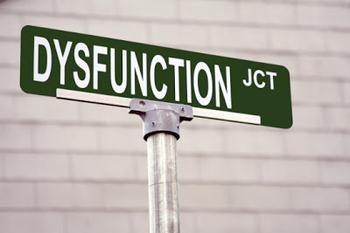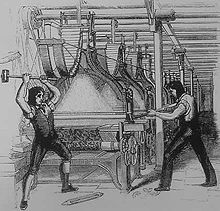Why is state gov so inefficient? Duh. Job preservation.
by CalWatchdog Staff | March 30, 2013 6:15 am
March 30, 2013
By Chris Reed
 The Sacramento Bee’s Jon Ortiz had a piece[1] Thursday about the grotesque mess that is California state government that had lots of interesting details about the extent of the dysfunction:
The Sacramento Bee’s Jon Ortiz had a piece[1] Thursday about the grotesque mess that is California state government that had lots of interesting details about the extent of the dysfunction:
“Last year, Gov. Jerry Brown christened an overhaul of the state’s personnel system, aiming to correct the wandering course of a government beset with arcane, conflicting rules that confound even the most experienced human resources managers.
“Now that overhaul faces a very public test with the state’s probe into ‘additional appointments.’
“Several agencies have cited the obscure 34-year-old policy as justification for giving salaried managers and supervisors secondary jobs that pay an hourly wage. The policy is so old that it exists only on paper. It’s confusing, imprecise and desperately needs updating.
“There are probably dozens — maybe hundreds — of similar personnel rules and regulations that departments — those that know about them, anyway — read and apply differently.”
Not in public employees’ interest to fix state’s mess
But Ortiz’s column, like so many other stories and analyses over the years, doesn’t acknowledge one reason why the chaos exists and has been tolerated. Indeed, he even asserts that it’s in everyone’s interest to fix the mess, because ….
” … an archaic, dysfunctional state government personnel system hurts everyone.
“‘Calcified personnel practices that were intended to measure “merit” discourage highly qualified people from applying for and landing state jobs, the independent, bipartisan Little Hoover Commission concluded eight years ago.”
Oh, what a load of hooey. An “archaic, dysfunctional state government” is one in which employee performance can’t be measured, employee efficiency can’t be improved and employee positions can’t be reduced.
Connect the dots. If the information-technology revolution had been allowed to transform the public sector as it has the private sector, we’d see government doing as much as it used to with far fewer workers. Instead, the IT revolution never made it to the public sector, including and especially in the state that’s home to Silicon Valley. Instead of doing more with less, we have chaos and overlap and confusion.
Government productivity gains could be ‘huge’
 And, no, it’s not true that the public and private sectors are so different that the IT revolution couldn’t make a difference in government efficiency. Here’s what the respected McKinsey consulting group said nearly a decade ago: “the opportunity to improve government productivity is huge … [with] three classic management tools . . . organizational redesign, strategic procurement and operational redesign.”
And, no, it’s not true that the public and private sectors are so different that the IT revolution couldn’t make a difference in government efficiency. Here’s what the respected McKinsey consulting group said nearly a decade ago: “the opportunity to improve government productivity is huge … [with] three classic management tools . . . organizational redesign, strategic procurement and operational redesign.”
More on the topic from a column[2] I did last year to mark the 200th anniversary of the peak of the Luddite movement in England:
“The key to [government] redesign is to stop building off the presumption that we need to have workers gather in the same building to handle routine tasks, and to require that consumers of government services go to these buildings, too.
“I once had to go to the Poway DMV to get a copy of a vehicle registration that I had lost because it was the only local DMV that had an appointment slot available within two weeks. Why? Why? Why? For God’s sake, in an era in which you can design your next car and do a zillion other things on the Internet, why do you ever have to drive to a government office anywhere to fill out a permit or pick up a form?
“Where are the virtual offices? Where are the MBA consultants who come in and spot ineffeciences and outline changes that seem obvious in retrospect? Why don’t we see the IT revolution depopulate government bureaucracies the same way it wiped out travel agencies?
“Because of 21st-century Luddites who hide behind claims of defending the middle class. The reality is that we’re seeing what is in essence immense featherbedding across all levels of government.”
This is why California’s state government is dysfunctional and chaotic: Because if it were run rationally and like a competent large corporation, we probably could get by just fine with half the state workers we now have.
This is what’s at stake in the fight over making state government more functional. Jon Ortiz may not have figured it out, but you can bet the unions have. And if the lunatics[3] running the state Public Employment Relation Board have their say, the Brown administration will end its reform push after having been told that reform is only OK if it’s been collectively bargained.
- piece: http://www.sacbee.com/2013/03/27/5297975/the-state-worker-moonlighting.html#mi_rss=Latest%20News
- column: http://www.calwhine.com/todays-luddites-those-blocking-i-t-revolution-from-shrinking-schools-government/2383/
- lunatics: http://www.calwatchdog.com/2013/01/14/brown-tolerates-perbs-lunacy-will-he-tolerate-calpers-version/
Source URL: https://calwatchdog.com/2013/03/30/why-is-state-gov-so-inefficient-duh-job-preservation/